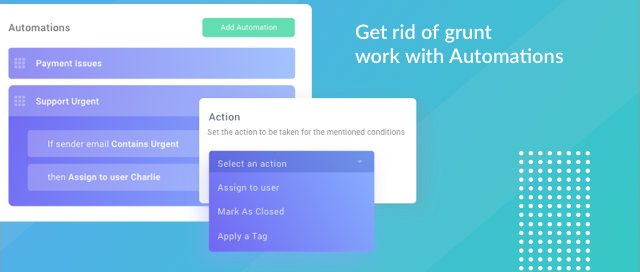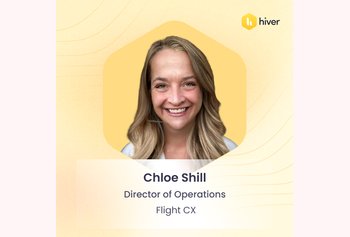The Complete Guide to Customer Success in SaaS
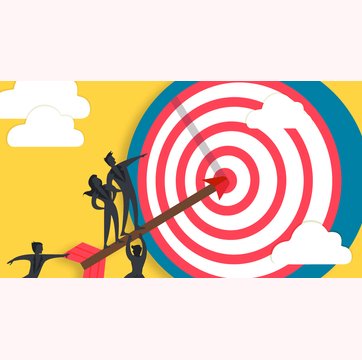
Table of contents
In any SaaS business, the focus is not just on making a sale. It’s about ensuring on-going customer satisfaction and engagement for continued growth. To help with this, the customer success function plays a crucial role.
Customer success in SaaS is deeply intertwined with the subscription-based nature of the service. Here, the importance lies in maintaining and enhancing customer satisfaction to ensure a steady revenue stream. This approach is critical in minimizing customer churn.
SaaS customer success teams play an integral role in this context, as they work proactively to ensure that customers continually find value in the product or service.
Furthermore, in the SaaS customer success framework, feedback and product improvement are crucial. It allows for rapid, customer-driven product evolution, ensuring that the service remains relevant and valuable to its users.
Consequently, customer success in SaaS is not just a support function; it’s a strategic element that drives growth, customer retention, and overall business success.
Jason Lemkin, Managing Director at Storm Ventures, believes as much as 90% of your SaaS revenue and your future growth, depends on customer success.
Some of the biggest SaaS companies like Salesforce and Box have succeeded not just by creating great products and offering unmatchable service standards, but also by closely aligning their success with the success of their customers.
And this is the core concept behind customer success.
The best way to achieve growth (and perhaps one day sell your online business) is by helping your customers grow. If your product is actually helping them succeed in their business, and you’re continually creating win-win scenarios, you’ll hardly ever need to worry about churn rates and retention.
While focusing on customer success is vital to a company’s growth, yet only 23% of B2B companies have a customer-centric approach. Let’s dig deeper to understand why customer success is important in SaaS companies and how you can implement customer success in your organization.
Table of Contents
- What is Customer Success in SaaS?
- How is customer success different from customer support?
- Why do SaaS businesses need customer success?
- How to implement customer success at an operational level
- 1. Acquiring the right customers
- 2. Creating a seamless onboarding experience
- 3. Making your mark with early engagement
- 4. Providing proactive customer education
- 5. Developing customer success advocates in your company
- 6. Forecasting customer troubles early
- 7. Levelling up by putting customer success tools to use
- 8. Understanding Reasons for Churn and Learning
- Key Metrics to Monitor Customer Success in SaaS
- 7 Key roles needed on your SaaS customer success team
- Wrapping Up
What is Customer Success in SaaS?
Customer success in SaaS (Software as a Service) is a fundamental concept that goes beyond the traditional definitions of customer support or service. It is a holistic approach focusing on ensuring that customers achieve their desired outcomes while using a SaaS product. In this model, the success of the customer directly impacts the success of the SaaS provider, making it a critical element of the business strategy.
SaaS customer success involves several key components:
- Proactive Engagement: Unlike reactive support models, customer success in SaaS proactively addresses customer needs and potential issues. This involves anticipating challenges customers might face and providing solutions before these challenges become problems.
- Goal Alignment: Understanding and aligning with the customer’s goals is vital in SaaS customer success. It’s about ensuring that customers can achieve their objectives through the effective use of the SaaS product, which in turn, promotes continued usage and satisfaction.
- Onboarding and Training: A crucial part of SaaS customer success is onboarding new customers effectively, ensuring they understand how to get the most out of the product. Ongoing training and support are provided to help customers adapt to new features and updates.
- Feedback Loop: A robust feedback mechanism is integral to SaaS customer success. It involves regularly gathering and analyzing customer feedback to improve the product and the overall customer experience.
- Customer Advocacy: In the SaaS customer success model, customers are not just users; they are potential advocates for the product. Building strong relationships with customers can turn them into promoters, leading to organic growth through referrals and testimonials.
Customer success in SaaS is a strategic approach centered around the idea of forming lasting, productive relationships with customers. It is about ensuring that customers are not only satisfied but are achieving their goals with the SaaS product, thereby driving mutual success for both the customers and the SaaS company.
How is customer success different from customer support?
Since the concept of customer success is relatively new, you can easily confuse it with customer service and support. But unlike support, customer success is not just a separate department in your company (it can be, though). The concept goes even beyond the popular belief that effective service and support ensure your customers are successful.
That should always be the case.
But customer success is an even bigger concept. The way I see it, and most experts seem to agree, customer success is a change in your approach from reactive support to proactive hustle.
It’s a forward-looking approach that works only when it becomes a part of your core business philosophy and reflects in everything that your organization does – from hiring the right people to resolving customer issues.
It always puts the customers first and focuses on making real contributions to their business, and helping them succeed. You can think of it as a performance-based model where an organization aligns its efforts and resources with the business goals of its customers.
Now that you know the difference between customer support and customer success, let’s understand why it’s so crucial for SaaS businesses to focus on their customer success function.
Why do SaaS businesses need customer success?
75% of UiPath’s revenue comes from existing customers. Zoom’s existing customers buy 30% more every year. What does this data tell us?
The health and profitability of a SaaS business directly depend on how strong your customer relationships are.
Earlier it was fairly easy for software companies, or non-tech companies to sell products. There wasn’t much to do after the sales team did their job. But today, especially for SaaS companies, making a sale is hardly the last step. In fact, a study shows that only 5-30% of revenue comes from the initial sale for most SaaS companies.
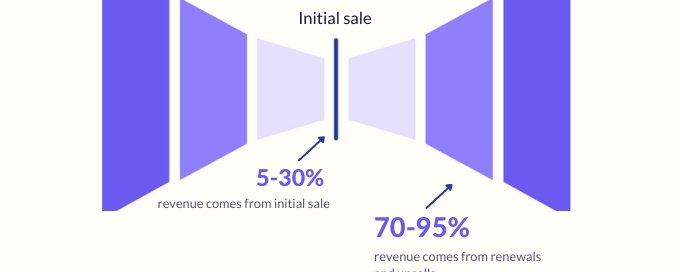
The real customer journey starts after you make the sale. Most SaaS businesses employ a subscription-based business model. This requires that you continually ensure your customers are satisfied and are having a positive experience with you.
That’s where customer success comes in. But the benefits of focusing on customer success are not just limited to identifying cross-selling or upselling opportunities to increase revenue.
A good customer success strategy will help your customers derive the best value from your product, thus driving your product adoption rates high. This will in turn promote positive word-of-mouth and customer advocacy that will fill your funnel with high-quality leads making customer acquisition easier.
Now, let’s dig deeper into how SaaS businesses can employ customer success strategies to improve customer loyalty and drive growth.
Recommended Reading

How to implement customer success at an operational level
Implementing customer success as a business philosophy obviously requires strong buy-in from the CEO and the top management of your company.
But the operational implementation of this concept still needs to be managed by your on-ground customer success team.
Below I’ve tried to break up and explain how SaaS customer success should look like at every stage of your customer lifecycle:
1. Acquiring the right customers
Customer success starts even before you acquire customers. To deliver optimum value with your product, and help customers succeed, you need to make sure that they’re actually the right customers for your product.
The best way to go about this is to develop the personas of your ideal buyers. Buyer personas are sample profiles of your ideal customers that take into account their expectations from your product, their business goals, their current standing in terms of finances and resources, and what they plan to achieve in the long run.
This is a crucial step that, if not done properly during project discovery phase, can come back to haunt you in the form of dissatisfied customers with unrealistic expectations and high customer churn.
2. Creating a seamless onboarding experience
Onboarding is the phase where your product makes the first impression on your customers. If they’re making a switch to your service from another platform, this step involves technical assistance and support as well.
However, for customer success, you should make sure that customers explore as many features of your product as possible that can give them immediate value.
You can use different triggers, notifications, and emails to guide new users and make the onboarding process memorable. A great example of this is how Duolingo onboards customers by offering an animated step-by-step walk-through of their tool.
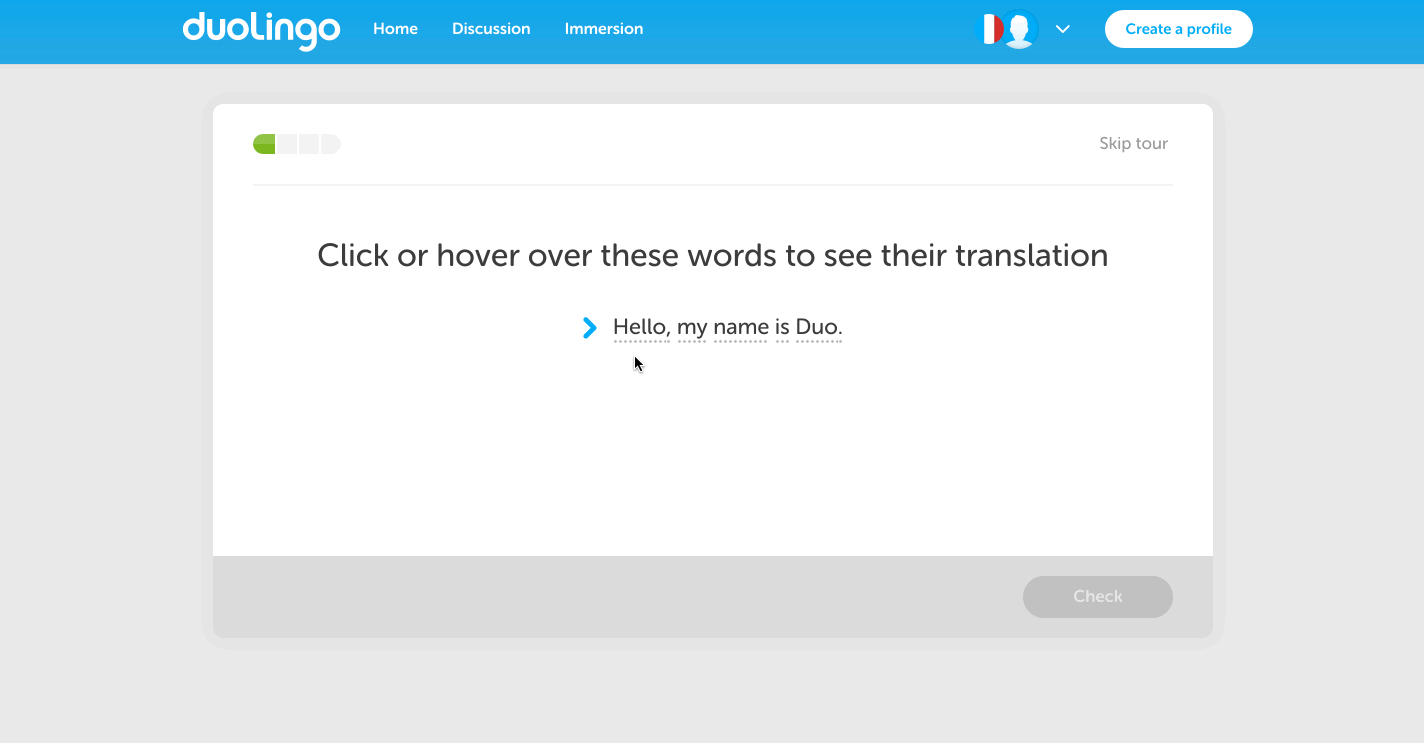
As a company focused on customer success, you need to proactively reach out in this phase and help users understand how exactly your product can give them business value.
3. Making your mark with early engagement
Every customer defines success differently. But the earlier you understand what success means to your customer, the better.
That is why during the early engagements with your customers you need to understand why they’re actually using your product.
This is important because you and your customers might define success completely differently.
For example, you might believe that a customer logging into your product dashboard twice or thrice a day and using it for a few hours daily shows that he’s getting value.
But in reality, this can be completely wrong. The customer might be spending additional time on the product because they’re finding it hard to use it properly.
You need to make your early customer engagements fruitful since that’s the time when customers are willing to speak their minds and share their feedback.
4. Providing proactive customer education
Customer support works on a reactive model where complaints are registered and resolved.
Customer success, however, focuses on proactively creating awareness about your product through customer education guides, tutorials, and interactive training.
A great example of this is Canva, a design tool that lets users create attractive images for social media and blogs as well as videos with its online video editor.

Instead of telling users how to effectively use their tool, Canva shows them some of its core functions in a 23-second video tutorial.
Another great example is how GetResponse, a leading email marketing solution, not just helps users send effective emails, but also trains them on building email lists, creating great landing pages, creating effective subject lines, writing irresistible content, and using calls to action for higher conversions.
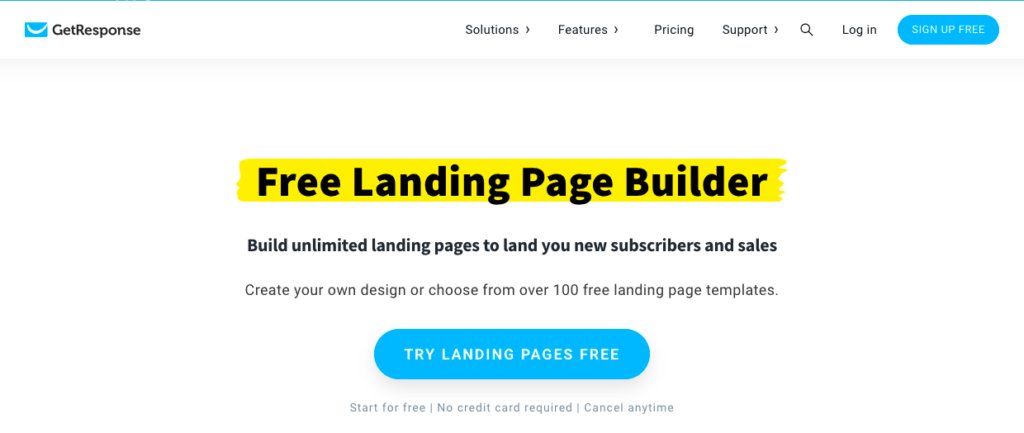
The objective is to help users get the maximum business value from their tool. This simple, but extremely effective, approach sets customers up for success from the day they sign up.
5. Developing customer success advocates in your company
Organizations with a culture of customer success have dedicated customer success managers (CSMs) who’re responsible for protecting the interests of the customers and ensuring that they’re getting value from the product.
They are customer advocates who’re closely connected with individual clients and understand what they need in order to be successful.
At the same time, they ensure that the customer remains viable for your company as well. Because if you’re not successful, you won’t be able to help your customer succeed.
By hiring customer success managers, you develop an internal accountability system that always keeps you on your toes, and focused on your customer’s business goals.
6. Forecasting customer troubles early
As opposed to traditional support, a company focused on customer success forecasts the potential difficulties and troubles that a particular customer is likely to face while using their product.
You can do this by using past customer data, existing trends and by developing triggers based on customer patterns. You could monitor their activity on your platform, and identify proactively if they need help.
Mitigating risks even before they arise can lead to a much more pleasant customer experience that makes a lasting impact.
However, there will always be times when a customer faces a unique challenge. In such cases, your standard helpdesk and support functions should prove sufficient.
7. Levelling up by putting customer success tools to use
Customer success involves staying ahead of your customers’ needs. It involves improving user experience, tracking and analyzing customer feedback, their behavior patterns, and metrics such as net promoter score (NPS),and customer satisfaction score (CSAT).
If you want to succeed in doing all of this efficiently, you must automate your workflows by using good customer success software such as onboarding tools, customer service tools, and CRMs.
Bonus Read: If you’re an enterprise, here’s a list of enterprise software and tools to check out. And if you’re a startup, you can check out this post on startup tools for 2024.
User Onboarding tools such as Userguiding, help you create a frictionless start for your customers. They can be further categorized into email onboarding, video onboarding, or in-product user guiding.
Optimizing your customer support processes is also a crucial part of customer success. Tools like Hiver can help you track and analyze customer service metrics and automate workflows to help you deliver superior customer experiences.
And lastly, your tech stack will be incomplete without customer relationship management tools like HubSpot. CRMs help you engage with your customers seamlessly and build meaningful relationships with them.
Recommended reading

8. Understanding Reasons for Churn and Learning
No matter how closely you’re aligned with your customer’s goals, there will always be churn for one reason or the other.
However, you need to make sure that you learn from this ongoing activity and make adjustments to your model when it makes sense.
A key part of this exercise is to understand why a customer is leaving you. You need to get in touch with them after the initial “cooling off” period and ask for quick feedback.
As a result, you may even learn that the customer was never the right fit for your product and should never have been acquired in the first place. Or you could realize a gap in your service model and make the required adjustments.
The important thing is that you’re willing to learn and evolve.
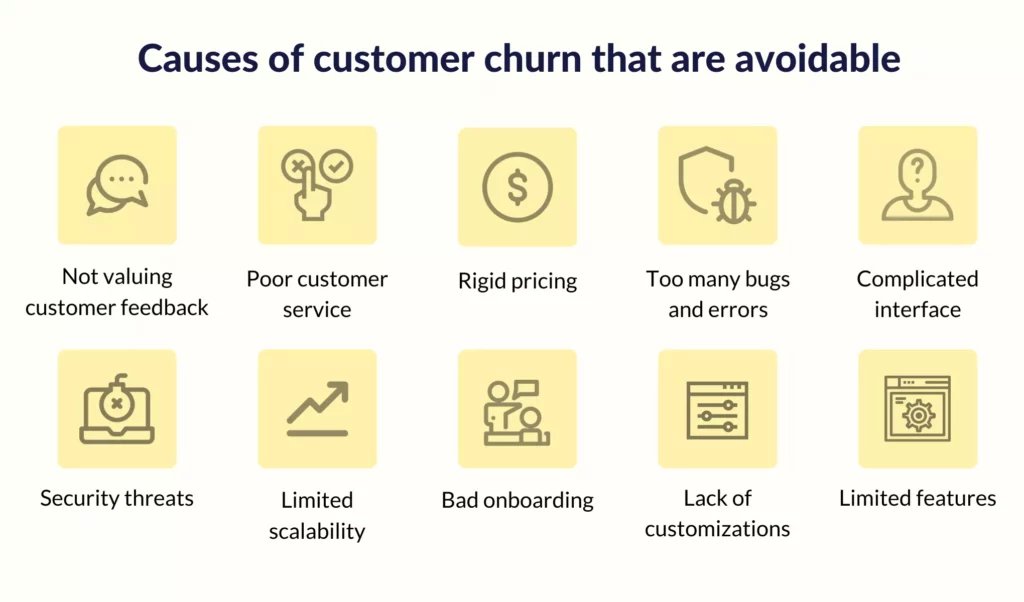
Key Metrics to Monitor Customer Success in SaaS
Navigating the complexities of SaaS requires a clear understanding of what truly drives business success. Let’s explore key metrics that are essential for any SaaS company focused on customer success. These metrics aren’t just indicators of where your business stands today; they’re tools to help shape your future strategies.
1. Churn Rate: This is a critical metric for any SaaS business. It measures the percentage of customers who stop using your product over a certain period. A high churn rate can indicate dissatisfaction with your product or service, signaling a need for immediate action.
2. Customer Lifetime Value (CLV): CLV helps you understand the total value a customer brings over the entire time period of their relationship with your company. This metric is pivotal in strategizing how much to invest in retaining existing customers versus acquiring new ones.
3. Net Promoter Score (NPS): NPS gauges customer loyalty and satisfaction by asking customers how likely they are to recommend your product to others. It’s a straightforward measure of customer perception and a predictor of future growth.
4. Customer Engagement Score: This score combines various user actions—like logins, feature usage, and time spent—to assess how engaged customers are with your product. More engagement typically means higher satisfaction and lower churn risk.
5. Monthly Recurring Revenue (MRR) and Annual Recurring Revenue (ARR): These metrics are the lifeblood of any SaaS business, indicating the predictable revenue generated from your customer base. Monitoring MRR and ARR trends can provide insights into overall business health and growth potential. For the convenience, you can visualize MRR and ARR in a dashboard to track these metrics in a real-time.
6. Customer Health Score: This composite metric takes into account various factors like product usage, customer feedback, and support interactions to rate the overall ‘health’ of a customer relationship. It’s a proactive tool for identifying at-risk customers before they churn.
7. Time to Value (TTV): TTV measures the time it takes for a new customer to achieve their first ‘win’ or value milestone with your product. Faster TTV can lead to higher satisfaction and retention.
8. Support Ticket Trends: Monitoring the volume and nature of support tickets can reveal common customer issues or pain points, allowing for targeted improvements in your product or service.
9. Renewal Rate: This is a straightforward metric showing the percentage of customers who choose to renew their subscriptions. A high renewal rate is a strong indicator of customer satisfaction and product value.
10. Expansion Revenue: This metric tracks additional revenue generated from existing customers, whether through upgrades, add-ons, or cross-sells. It’s a key indicator of customer satisfaction and the perceived value of your product.
7 Key roles needed on your SaaS customer success team
A well-structured team dedicated to customer success in SaaS can be the difference between a thriving business and a struggling one. Here are the key roles that form the core of SaaS customer success, ensuring that your business not only attracts but also retains and satisfies its users.
1. Customer Success Manager (CSM) in SaaS:
- Role: The CSM is the heartbeat of customer success in SaaS. They proactively engage with clients, understanding their needs, and aligning them with the product’s capabilities.
- Responsibilities: From onboarding to advocacy, they monitor customer health, identify opportunities for upselling, and prevent churn, playing a pivotal role in the lifecycle of SaaS customer success.
2. SaaS Technical Support Specialist:
- Role: As troubleshooters, these specialists are crucial in maintaining the technical integrity of the product, a key aspect of any SaaS business.
- Responsibilities: They handle complex queries, resolve technical issues, and provide timely support, ensuring uninterrupted service — a cornerstone in building trust and reliability in SaaS.
3. Onboarding Specialist for SaaS:
- Role: They lay the foundation for customer success in SaaS, ensuring new users start off on the right foot.
- Responsibilities: By offering tailored onboarding experiences, they help customers quickly realize the value of the product, setting a positive trajectory for ongoing SaaS customer success.
4. Customer Success Analyst in SaaS:
- Role: Analysts in SaaS customer success play a vital role in deciphering customer data and insights.
- Responsibilities: They track metrics, analyze usage patterns, and provide actionable insights, which are essential for strategic decision-making.
5. SaaS Account Manager:
- Role: These managers are the commercial warriors of customer success teams, focusing on account growth and retention.
- Responsibilities: They nurture customer relationships, identify new business opportunities, and ensure that the customers continually see the value in their SaaS investment.
6. Customer Education and Training Specialist for SaaS:
- Role: This role is about empowering customers through knowledge, a fundamental aspect of customer success in SaaS.
- Responsibilities: They develop training materials, conduct webinars, and create educational content, all aimed at enhancing user competency and engagement.
7. Customer Feedback Coordinator in SaaS:
- Role: Acting as the Voice of Customer (VoC) within the company, they are integral to shaping the future of customer success in SaaS.
- Responsibilities: They gather, analyze, and channel feedback into actionable insights, ensuring that customer opinions drive improvements and innovation in SaaS.
Wrapping Up
Customer success, as a concept, is still raw and there’s not a single definition that everyone agrees on. That is why it can easily be confused with support excellence as well.
In reality, though, it’s a change of mindset from providing mere support to proactively focusing on eradicating customer issues even before they arise, and ensuring that your product plays a key role in helping customers meet their business goals.
Once your focus shifts from extracting the maximum revenues from your customers to providing the maximum value to their business, and helping them succeed, you’re on track to developing a customer success culture in your organization.











